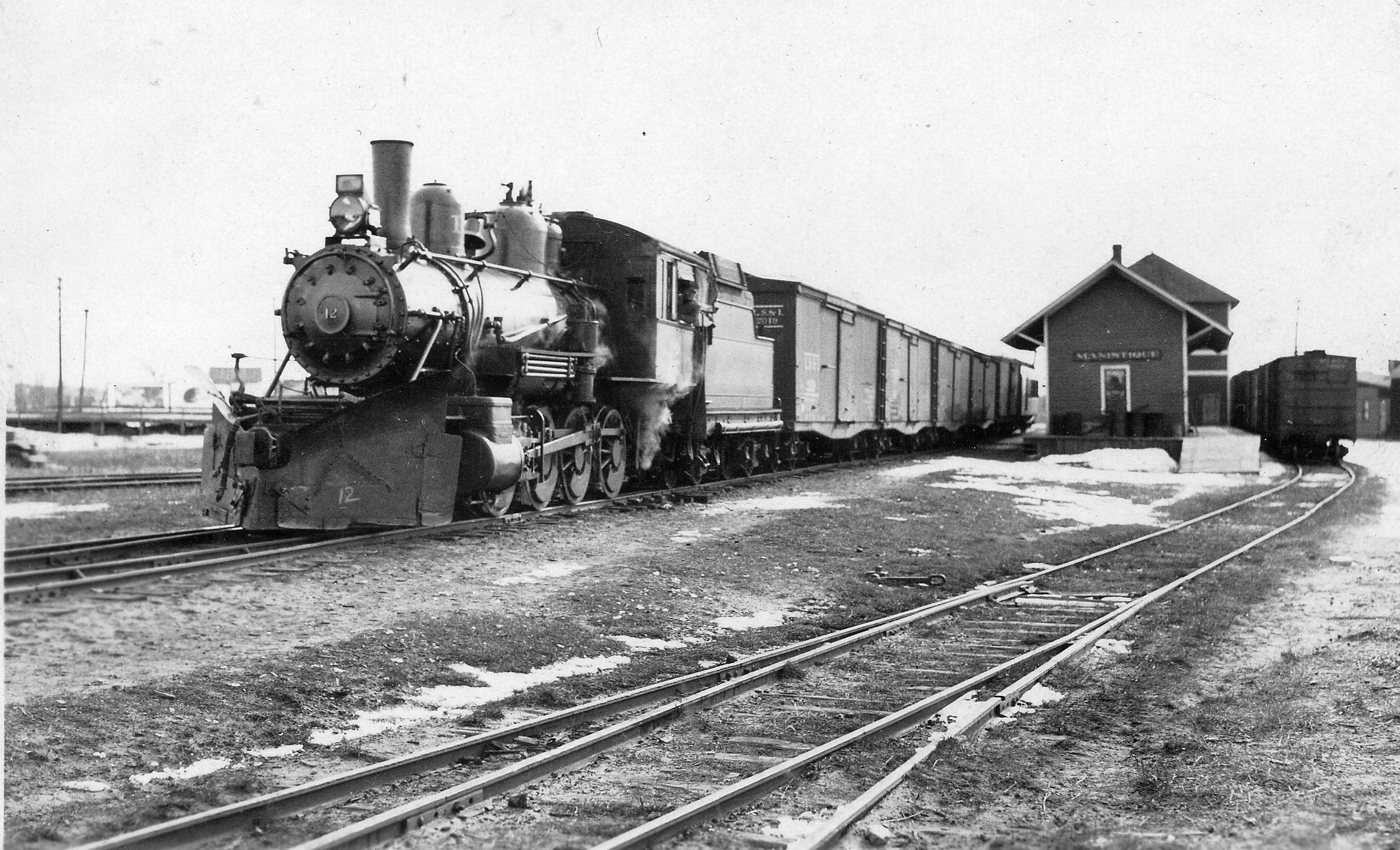
Engine No. 12, March 1932 Image. This locomotive was later renumbered 2370 and was destroyed in the roundhouse fire of 1952. It was scrapped in 1953. (Niles/Helmka Family Collection)
Early History
Construction of the railroad line between South Manistique and Shingleton was completed in 1898 and was then known as the Manistique and Northwestern Railroad (M&NW). Passenger service from Manistique to Shingleton began on January 1, 1899 with a one-way fare costing $1.35. In 1902 the line became part of a new railroad known as the Manistique, Marquette and Northern (MM&N) offering passenger service between Manistique and Marquette. During 1907, the company relocated the railroad’s roundhouse and shop buildings from South Manistique to Manistique north of its Deer Street depot and offices. The company was reorganized yet another time in July of 1908 and briefly became known as the Manistique & Northern Railroad (M & N).
Birth of the Manistique & Lake Superior Railroad
The Manistique and Lake Superior Railroad was incorporated on July 30, 1909. On the following day its assets, along with those of the Manistique and Northern Railroad, were purchased by the Ann Arbor Railroad for $1.00. The sale included the railroad line from Manistique to Shingleton as well as the branch line from Scotts into Alger County. The Ann Arbor Railroad had been providing railroad car ferry service to Manistique for over a decade beginning in July of 1897 when the Ann Arbor No. 1 arrived in the harbor.
History of the Haywire Line (1909-1968)
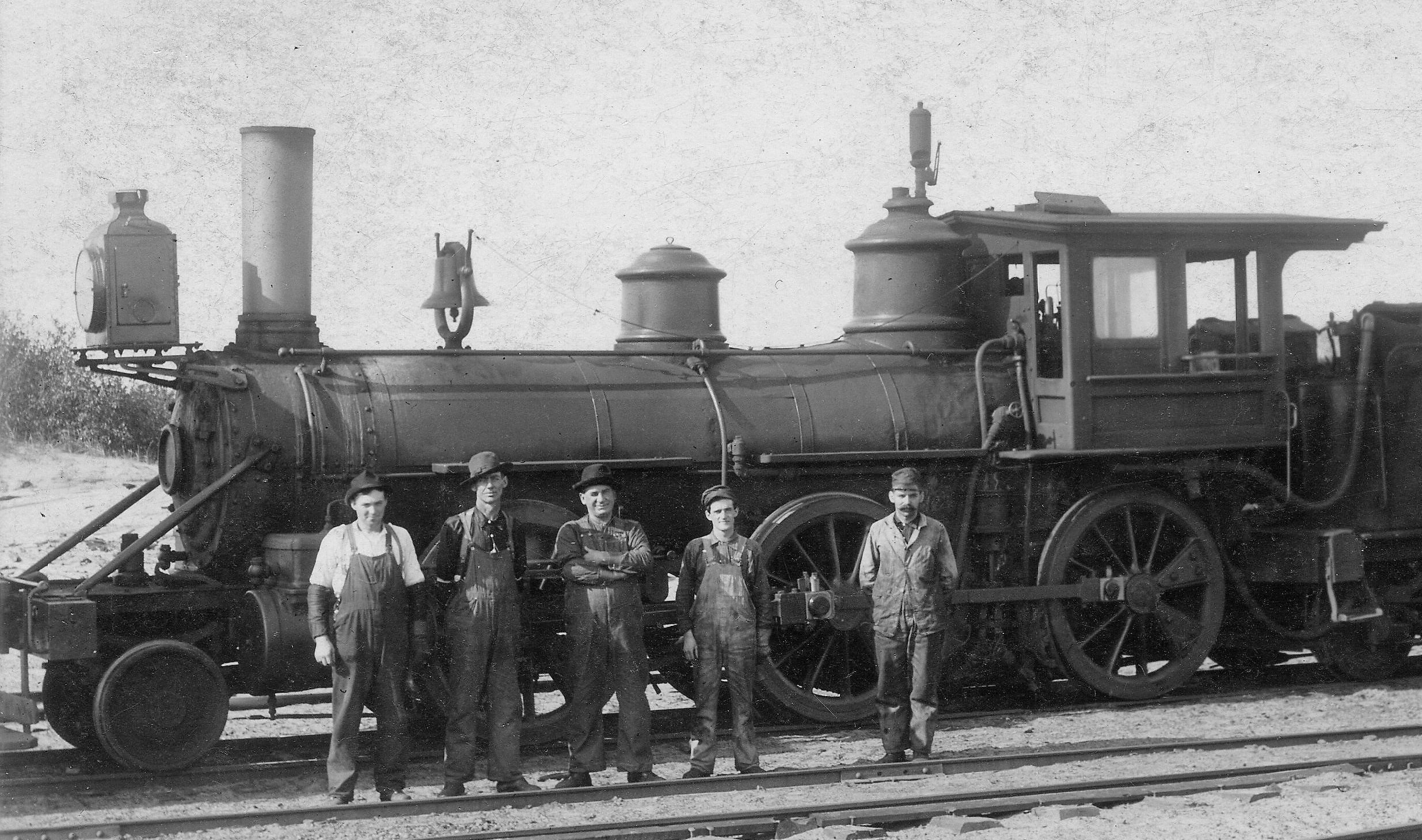
1912 photo of Haywire Locomotive and Crew. Left to Right: Amiel Anderson, Frank Walker, Jack Larien, Edward Labelle (Engineer) and Lavern Niles (Fireman). Niles/Helmka Family Collection.
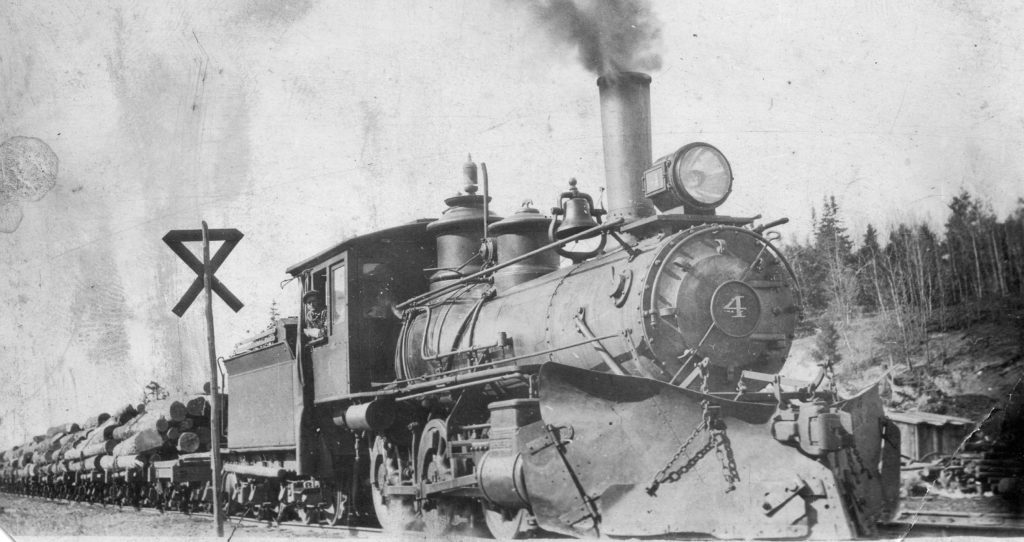
Locomotive No. 4. hauling several cars loaded with timber. Niles/Helmka Family Collection
The Haywire was primarily a hauler of freight including iron ore, lumber, pulpwood, alcohol, and livestock. The peak for passenger service took place during the years 1911 to 1922 when in excess of 10,000 passengers rode the M & LS railroad annually.
Several lumber camp communities sprung up along the Haywire line. These included Ackers, Anderson, Beeson’s Spur, Bissel’s Crossing, Cooper, Delta Siding, Doty, Doyle’s, Hartman, Hovey, Jenney, Klondike, Lily Lake, Maki, McInnes, McNeil, Miller, Morans, Parker, Phillions, Richardson, Scotts, Spruceville, and Steuben. There were also numerous camps and spurs. Only four Haywire communities exist today including Manistique, Hiawatha, Steuben and Shingleton. A majority of these settlements disappeared along with the timber. The Haywire line hung on until July 18, 1968 when it was abandoned and went out of existence.
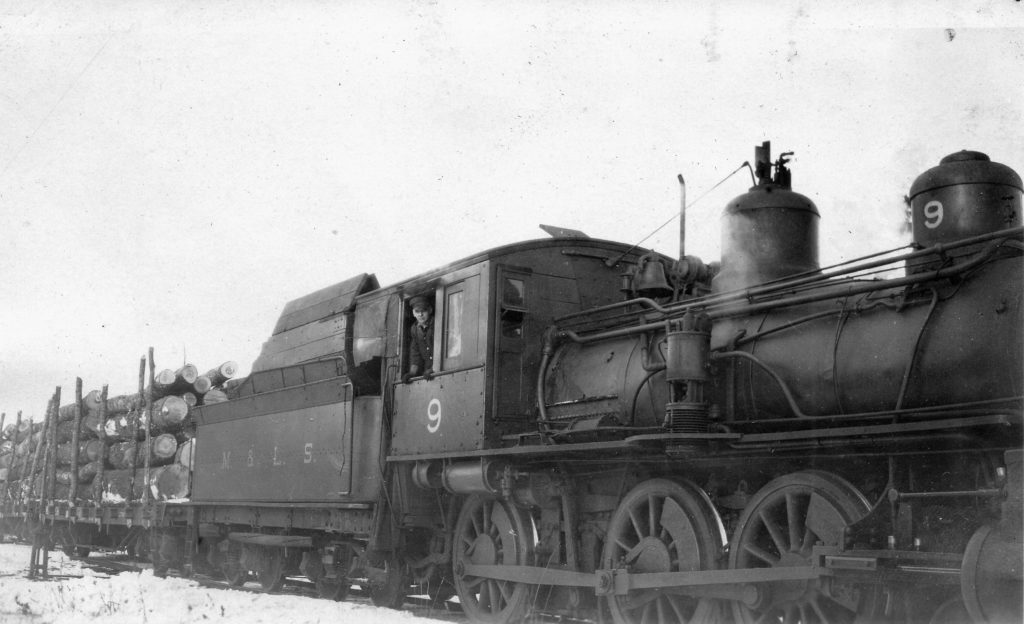
Locomotive No. 9 was built in 1890 and was originally owned by the Alabama Midland Roadroad. It was acquired by the Ann Arbor Railroad and transferred to the Manistique & Lake Superior Railroad in 1913. Niles/Helmka Family Collection
The Haywire Mail Car
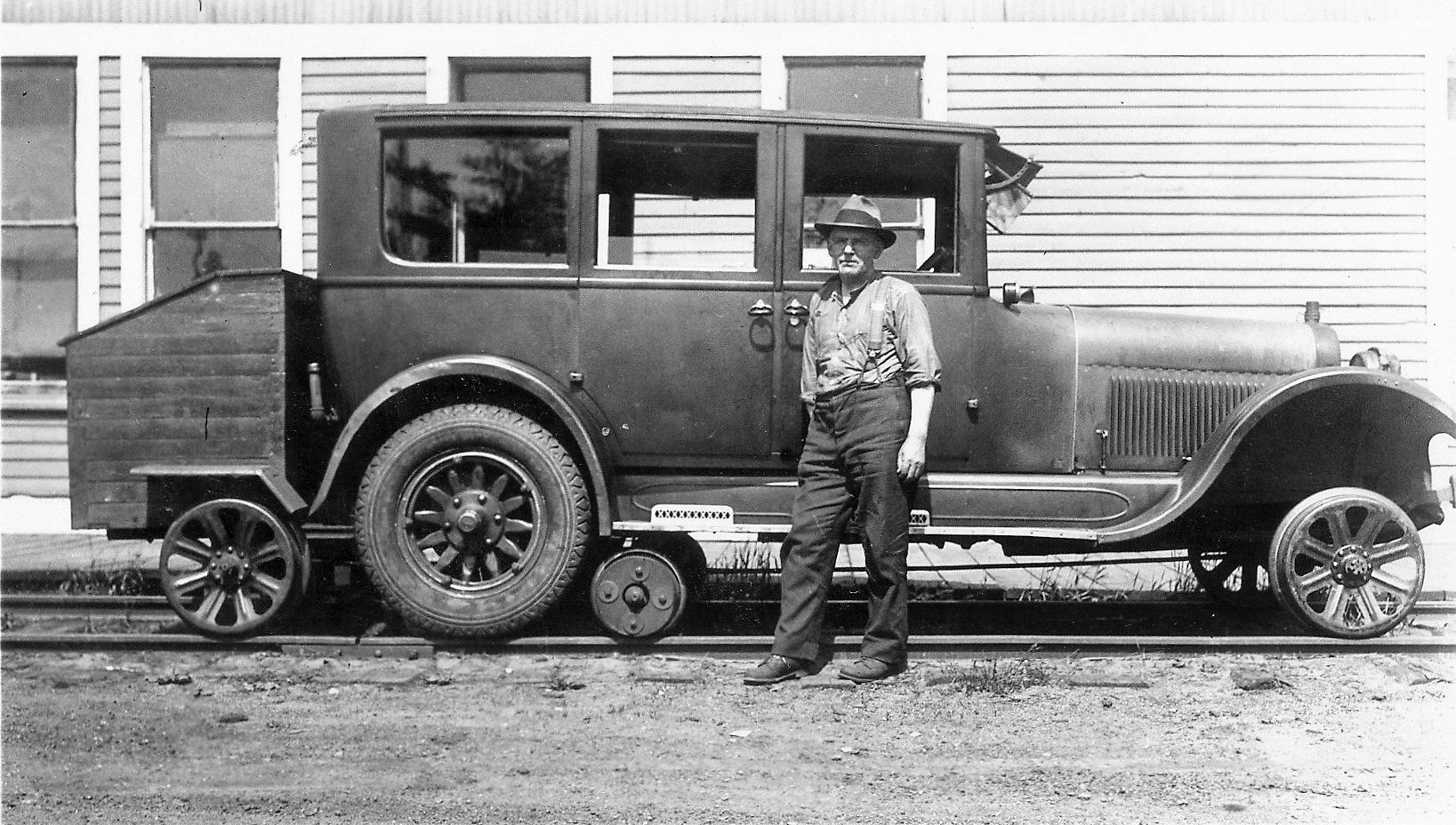
1930s photo of Vern Niles standing by the 1923 Buick sedan redesigned as a railroad mail car by the M & LS Railroad. Niles/Helmka Family Collection
During the depression years of the 1930s, the Haywire mail car made the run between Manistique and Shingleton every day but Sunday. The mail car was designed and built by S. P. Reid who was the master mechanic of the Manistique and Lake Superior Railroad. The engine was original. The front wheels of the Buick were removed and replaced with hand car wheels. Another set of hand car wheels were placed at the rear of the sedan. The original back wheels of the Buick power the car down the tracks. Niles claimed that the Buick could obtain a maximum speed of 65 mph, but he never drove it that fast. The mail was placed in the trunk on the back of the sedan and there was room in the car for three passengers. A snowplow was placed in front of the car and was maintained there year around to prevent the car from being “derailed” by porcupines on the track.
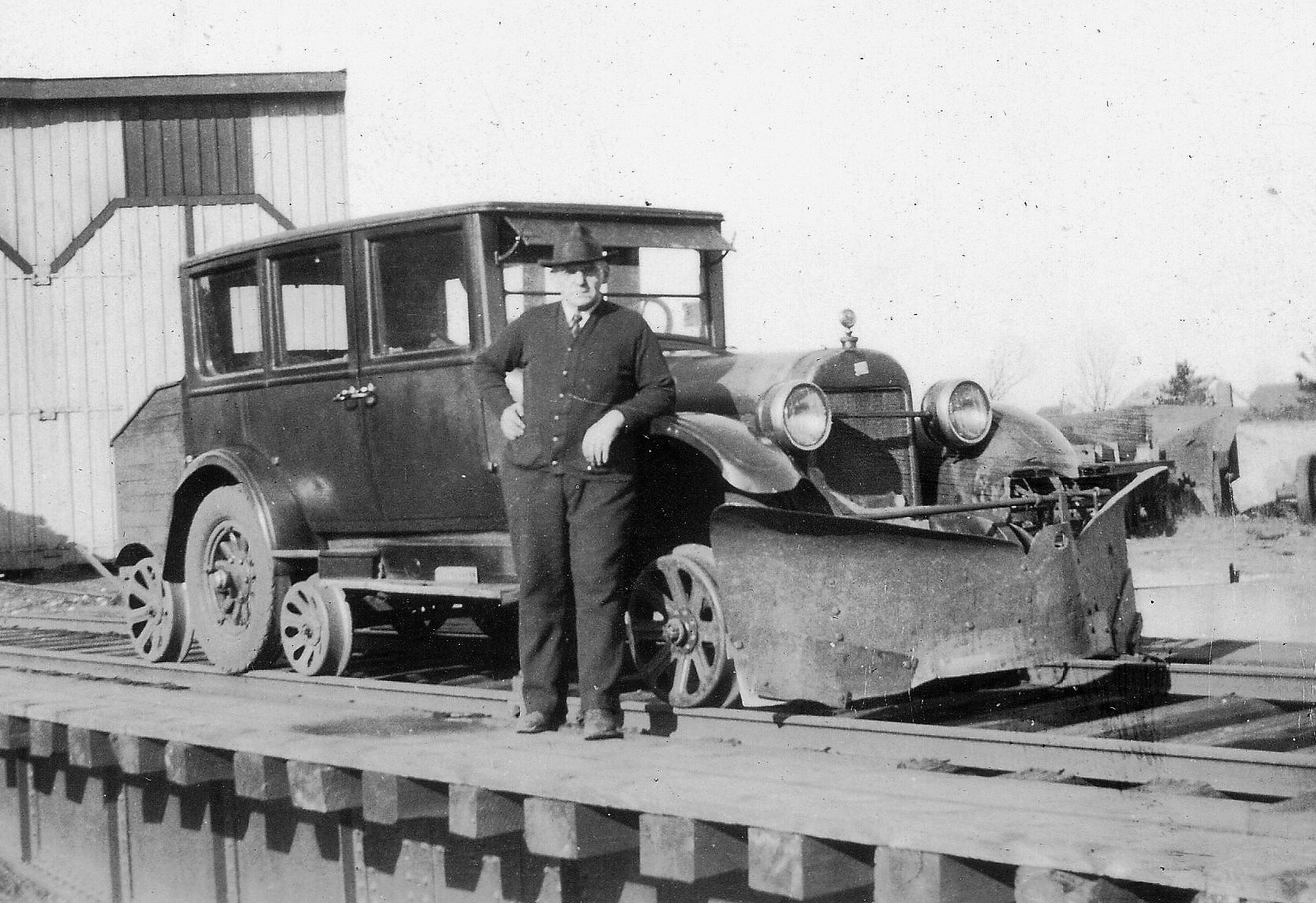
1936 photo of the mail car showing the snowplow mounted on the front. Niles/Helmka Family Collection
Ode to Engine No. 12
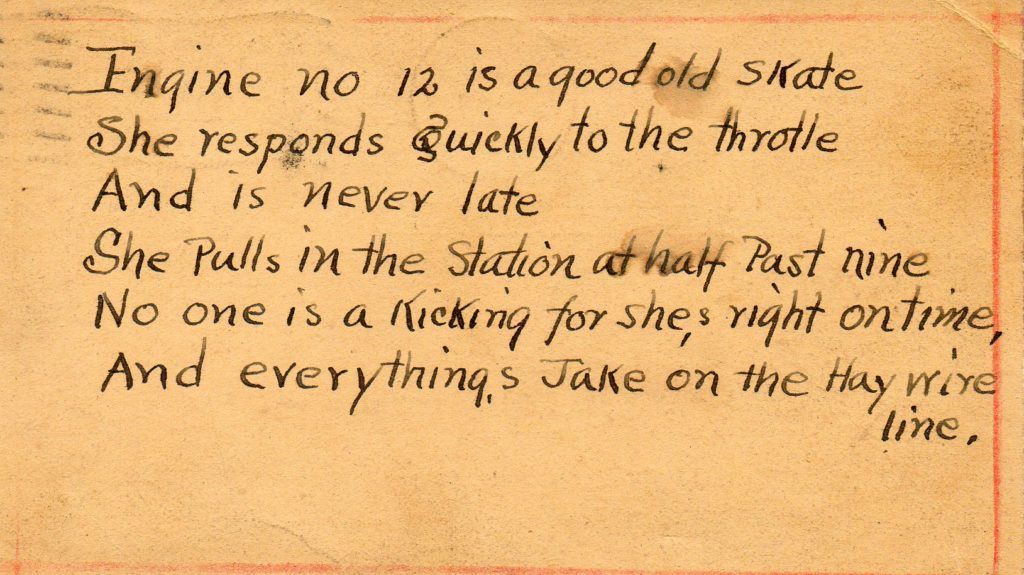
Poem on back of postcard believed written by Lavern Niles (1930)
